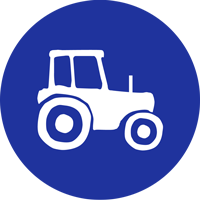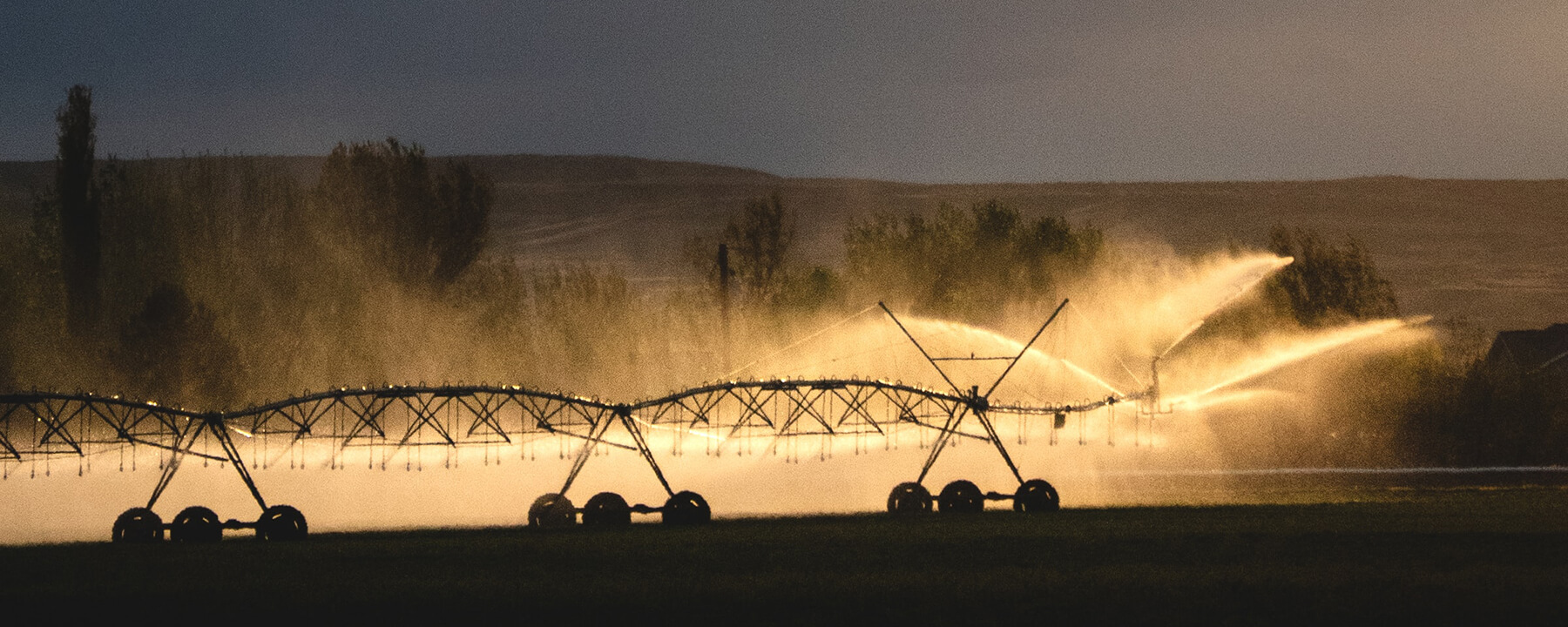
The Cool Farm Tool quantifies on-farm greenhouse gas emissions and soil carbon sequestration
Farmers manage for cost, productivity and soil health. The Cool Farm Tool can show how these management decisions reduce greenhouse gas emissions and sequester carbon. With an interactive interface designed to be simple to use, but scientifically robust in the complex arena of carbon accounting, the Cool Farm Tool helps you identify good agricultural practice.
The calculations are based on information you will have on hand or easily accesible. It takes just 20-30 minutes to finalise an assessment when the required data is available. Existing assessments can be duplicated to ease scenario analysis and future assessments.
The Cool Farm Tool isn't just a calculator. It stimulates thinking about management and helps to develop action plans through the creation of 'what-if' scenarios. It shows emission hotspots and allows you to easily simulate the effect of practice changes through the dynamic live summary.
Reducing tillage and adding cover crops can reduce and even sequester emissions while building soil health. But each farm and field responds differently. The Cool Farm Tool allows farmers to find out how their fields and conditions respond to various management changes.
The Cool Farm Tool has been tested and adopted by a range of multinational companies who are working with their suppliers to measure, manage, and reduce greenhouse gas emissions in the effort to mitigate global climate change.

Harvested yield and marketable yield product weights

Growing area

Fertiliser
applications: type and rate

Rate and active ingredient of crop protection

Energy use
(kWh and fuel use)

Optionally: transport: mode, weight and distance

Herd or
flock size

Feed

Manure management

Energy use
(kWh and fuel use)

Transport of
feed and
other inputs


The Cool Farm Tool Water metrics provide crop irrigation requirements and blue and green water footprints
With 70 percent of fresh water globally consumed by agriculture, farmers and supply chains are often called on to provide assessments of water used for crop production and ensure efficiency.
Water footprints can be cumbersome and data intensive. But the Cool Farm Tool water metrics enable farmers to quickly and easily account for their crops' water needs and gain insight into better practice. Behind the scenes, the tool combines just a few additional user inputs with global data sets for crop, soil and climate data, to provide crop water balance estimates.
Find out if you over- or under-irrigated. Compare water applied with estimated requirements based on global datasets. Optimal water can mean optimal yields, meaning all resources - both natural and financial - are used most efficienctly.
Try out management options like irrigation type and increasing soil organic matter to see how to improve water retention and make the most of each drop of water applied.

Click on the map or manually record latitude and longitude in your farm settings

Indicate planting/ harvesting timeframes and soil moisture at planting (dry, medium, wet)

Enter your water amounts applied to compare it with crop irrigation needs

Keep track how irrigation events are spread throughout growing season


The Cool Farm Biodiversity metric quantifies how well farm management supports biodiversity
The Cool Farm Tool Biodiversity allows farmers to quantify the good they are doing. Scores build as you go - the more positive actions you can make that support biodiversity, the higher the score.
Biodiversity assessments provide scores along four dimensions and against target indicator species groups. Farmers can see which species groups are benefiting from their practices and how they might increase and expand these benefits.
For example: field margins sown with perennial flowering seed mixes, gives you three points for helping beneficial insects and three points overall but no points for species that aren't known to benefit like woodland or wetland flora.
Bird nesting boxes, set-asides of hedges or trees, leaving un-mown strips or using selective crop protection products to spare beneficial insects are examples from the wide range of practices that score points.
By using the tool, farmers and buyers in the supply chain can quantify baseline impacts on biodiversity, and measure and track improvements over time.
The tool presents a series of multiple choice questions. These are scored based on a combination of conservation database evidence with expert opinion. These scores come together to provide an overall score to indicate your beneficial contribution to farm biodiversity.
The current version of the Cool Farm Tool Biodiversity metric applies to the Temperate Forest biome (e.g. northern Europe, eastern North America) and the Mediterranean and Semi-Arid biomes (e.g. the Mediterranean basin, California, central Chile, western South Africa and similar regions). In the future, the tool plans to include Tropical Forest biomes. This will cover biodiversity management in most of the major agricultural production regions of the world.

The total area
of the farm, including
non-productive land

General information
about farm management practices, inputs and cultivation

Provision of small
habitats less than a hectare

Provision of large habitats for nature conservation greater than one hectare

Registered address only: 87b Westgate, Grantham, Lincolnshire, NG31 6LE England
support@coolfarmtool.org